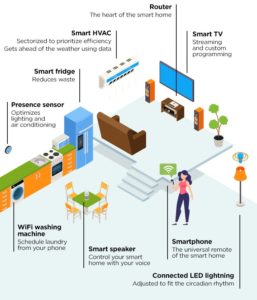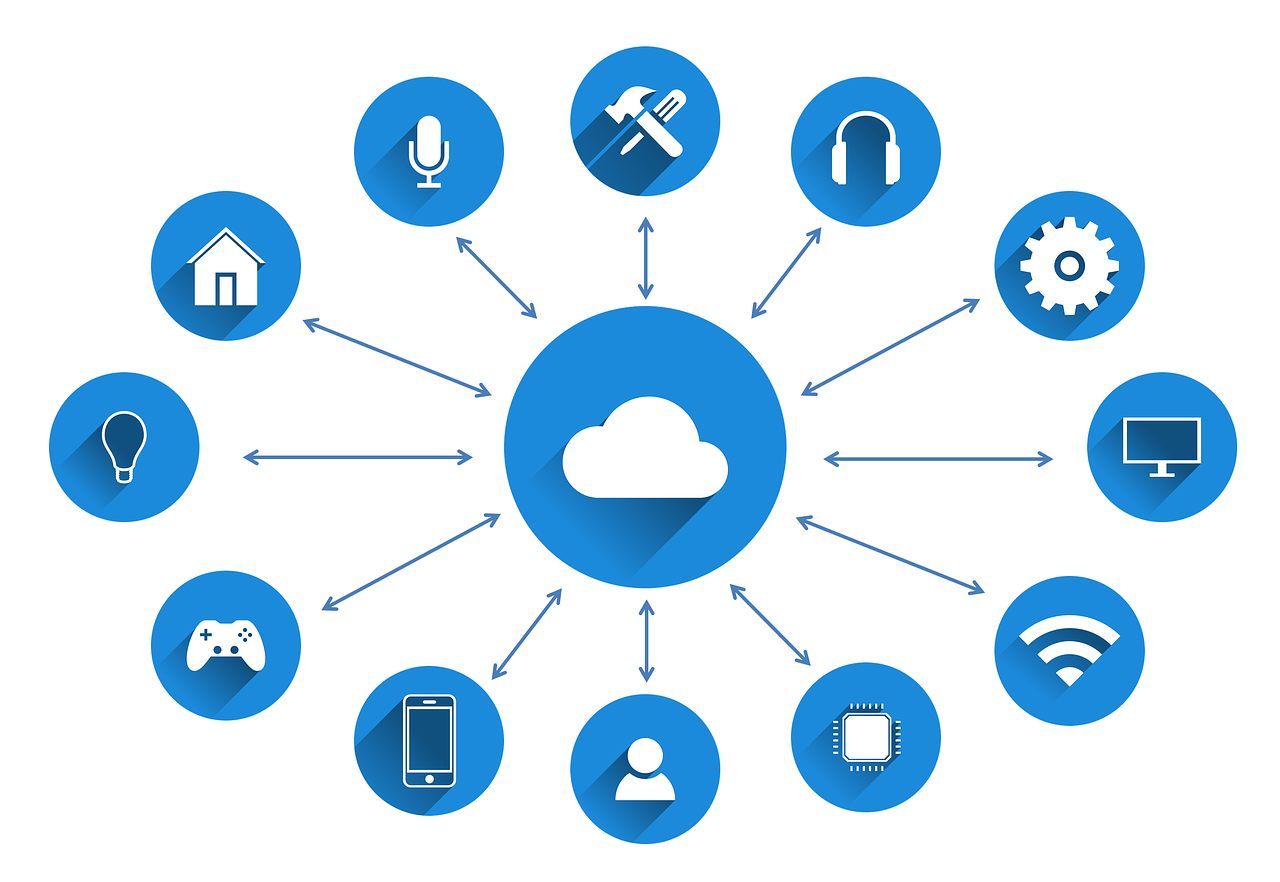Home Automation, often referred to as “Smart Home Technology”, is the use of technology to automate your home. Home automation allows you to control almost every aspect of your home through the Internet of Things (IoT).
Home Automation started with the invention of the Thermostat and has developed into one of the biggest and fastest growing markets in technology. Home Automation’s potential continues to grow. You can use it for home security, controlling appliances, monitoring energy use, as a personal assistant, for looking after the elderly or disabled and more.
The first industry standard for home Automation was X10. X10 helps devices connect to each other primarily through power line wiring, radio frequency, and wireless-based protocols. Today Zigbee, Z-Wave, and Insteon are also leading protocols for Home Automation. These new industry standards rely more heavily on modern wireless technology, like mesh-networking.

Smart Home Basics
Let’s start with the basics. The following are the most commonly used Smart Home options on the market right now. They are easy to use, install, and tend to be the most affordable Smart Home tech. Some of these basics are: Smart Speakers, Smart TVs, Smart Thermostats, Smart Plugs, Light Automation, Video Door Bells, Robot Vacuums.
Smart Kitchens
Though technology has yet to provide us with a robot chef, these smart kitchen appliances make cooking and cleaning that much easier. You can even connect many of them with your smart speakers!
Smart Bathrooms
Even the most basic necessities can be enhanced in a Smart Home. Smart-Bathroom technology will make your bathroom more than a room you have to use.
Smart Nurseries
Having a newborn is one of the most rewarding, and stressful experience in life. Thanks to Smart-Nurseries, babies are safer than ever, and parents can relax just a little.
Smart Pet Care
Taking care of your fur-babies is easier than ever with smart pet-tech. The best part about these gadgets is that they make life easier for you and your pets. Feel less guilty about leaving them home alone during the day, and enjoy the time you do spend with them that much more.

Is Home Automation Safe?
No technology is a 100% foolproof, and Home-Automation is no different. Here are some things to keep in mind when investing in Home Automation. When it comes to Smart Homes, you really have to consider the fact that being so connected gives companies the chance to collect data about you. The number one culprit is going to be your smart speaker. Many people leave their smart speakers on all the time, which means they are listening all the time.
Cybersecurity is another very important issue that many people do not take seriously enough. The Internet of Things (IoT) device market just keeps growing and developing, and as it does security for these devices sometimes falls through the cracks. As a consumer, you need to know how to protect yourself, in case developers cannot.
Now that you have all the information you need on Home Automation, and Smart Home technology, the next step is finding the best products for you.
